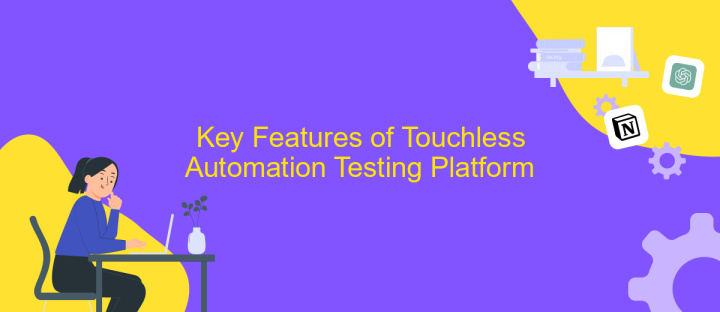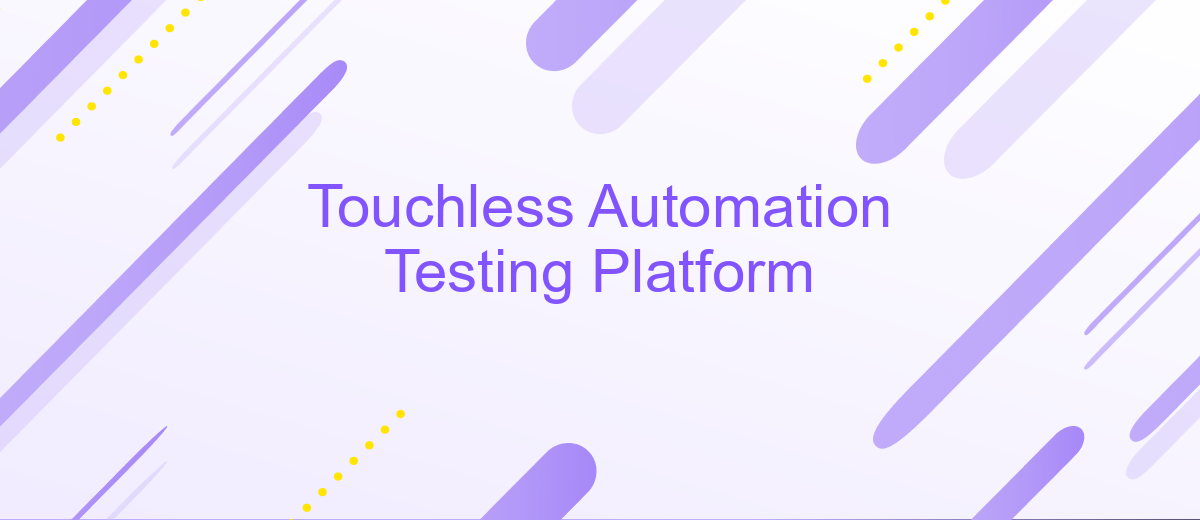Touchless Automation Testing Platform
In the rapidly evolving landscape of software development, the demand for efficient and seamless testing solutions has never been higher. Enter the Touchless Automation Testing Platform—a groundbreaking innovation that revolutionizes the way testing is conducted. By eliminating the need for manual intervention, this platform enhances accuracy, reduces time-to-market, and empowers teams to focus on delivering superior quality products with unprecedented ease and precision.
Introduction
In today's fast-paced digital world, the demand for efficient and reliable software testing solutions is more critical than ever. Touchless automation testing platforms have emerged as a revolutionary approach, offering seamless testing processes without the need for human intervention. These platforms leverage advanced technologies to ensure software quality and performance while significantly reducing time and effort.
- Eliminates the need for manual test execution, reducing human error.
- Accelerates the testing process, enabling faster time-to-market.
- Enhances test coverage by automating repetitive and complex test scenarios.
- Integrates with various development tools for a streamlined workflow.
- Provides real-time analytics and reporting for informed decision-making.
By adopting a touchless automation testing platform, organizations can achieve higher efficiency and accuracy in their software testing processes. This approach not only optimizes resources but also ensures that applications meet the highest quality standards. As technology continues to evolve, the integration of touchless automation in testing strategies will become increasingly vital for maintaining competitive advantage in the software industry.
Benefits of Touchless Automation Testing Platform

Touchless automation testing platforms offer a transformative approach to software testing by minimizing human intervention. One of the primary benefits is the significant reduction in testing time, as automated tests can run continuously without the need for manual oversight. This efficiency not only accelerates the development cycle but also enhances the overall quality of the software by ensuring that tests are consistently executed under the same conditions, reducing the risk of human error. Furthermore, these platforms are designed to be highly scalable, allowing teams to easily adjust the scope of testing as projects grow and evolve.
Another advantage is the seamless integration capabilities with various tools and services, such as ApiX-Drive. This integration facilitates the automation of workflows and data exchange between different systems, enhancing the platform's functionality. By automating these processes, teams can focus on more strategic tasks, such as analyzing results and optimizing test coverage. Additionally, touchless automation platforms often provide comprehensive reporting and analytics, enabling teams to gain valuable insights into test performance and application stability, ultimately leading to more informed decision-making and improved software quality.
Key Features of Touchless Automation Testing Platform

Touchless automation testing platforms are revolutionizing the software testing landscape by eliminating the need for manual intervention. These platforms leverage advanced technologies to ensure seamless integration and execution of test cases, significantly reducing time and effort. By automating repetitive tasks, they allow teams to focus on more strategic activities, thus enhancing overall productivity and efficiency.
- AI-driven Test Creation: Automatically generates test cases based on application behavior and user interactions, ensuring comprehensive coverage.
- Seamless Integration: Easily integrates with existing CI/CD pipelines, enabling continuous testing and faster release cycles.
- Real-time Analytics: Provides actionable insights and detailed reports, allowing teams to quickly identify and address issues.
- Cross-Platform Compatibility: Supports testing across various devices and operating systems, ensuring a consistent user experience.
- Scalability: Capable of handling large volumes of tests simultaneously, adapting to the growing needs of enterprises.
Incorporating a touchless automation testing platform can significantly enhance the quality and reliability of software products. By minimizing human error and accelerating the testing process, organizations can achieve faster time-to-market and maintain a competitive edge. These platforms are essential tools for modern software development teams aiming for excellence and efficiency.
Implementation Considerations

When implementing a touchless automation testing platform, it is crucial to consider the existing technological infrastructure. Compatibility with current systems ensures seamless integration and minimizes disruptions. Assess the software and hardware requirements to determine if upgrades are necessary, and ensure that your team is equipped with the necessary skills to manage the transition effectively.
Another critical factor is the selection of the right tools and frameworks. The choice should align with the specific needs of your organization and the types of applications being tested. Evaluate options based on scalability, ease of use, and support for various testing scenarios. A thorough analysis will help in selecting a platform that offers the best return on investment.
- Evaluate existing technological infrastructure for compatibility.
- Assess software and hardware requirements.
- Ensure team readiness and skillset alignment.
- Select tools and frameworks that meet organizational needs.
- Consider scalability and ease of use in tool selection.
Finally, consider the long-term maintenance and support of the platform. Establish a plan for regular updates and training sessions to keep the team proficient with new features and capabilities. This proactive approach will ensure the platform remains effective and continues to deliver value over time.
Conclusion
In conclusion, the implementation of a touchless automation testing platform represents a significant advancement in software testing methodologies. By minimizing human intervention, such platforms enhance testing accuracy and efficiency, ultimately leading to higher quality software products. The integration of advanced technologies like AI and machine learning further empowers these platforms to adapt and evolve, ensuring that they remain relevant in an ever-changing technological landscape. This approach not only reduces the time and resources required for testing but also allows teams to focus on more strategic tasks, fostering innovation and creativity.
Moreover, the seamless integration of these platforms with other tools and services is crucial for maximizing their potential. Services like ApiX-Drive facilitate this integration by offering a user-friendly interface and robust capabilities to connect various applications effortlessly. By streamlining the integration process, ApiX-Drive enables organizations to harness the full power of touchless automation testing, ensuring a smooth and efficient workflow. As companies continue to embrace digital transformation, adopting such platforms will be essential for maintaining a competitive edge in the industry.
FAQ
What is a Touchless Automation Testing Platform?
How does a Touchless Automation Testing Platform work?
What are the benefits of using a Touchless Automation Testing Platform?
Can a Touchless Automation Testing Platform integrate with other tools?
Is a Touchless Automation Testing Platform suitable for all types of software applications?
Apix-Drive is a simple and efficient system connector that will help you automate routine tasks and optimize business processes. You can save time and money, direct these resources to more important purposes. Test ApiX-Drive and make sure that this tool will relieve your employees and after 5 minutes of settings your business will start working faster.

